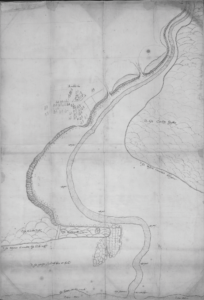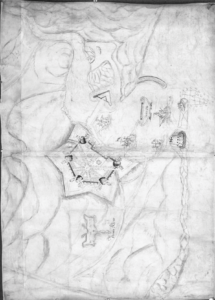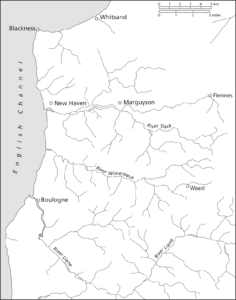Angela Nicholls is an Associate Fellow at the university of Warwick whose research and stated interests on Warwick universities staff page “…focus on the provision of housing for the poor in early modern England, in particular the nature and variety of post-Reformation almshouses”.[1] Nicholls has published ‘only’ one book on the subject though she has written in other scholarly works and published several papers on related subjects. Almshouses in Early Modern England: Charitable Housing in the Mixed Economy of Welfare, 1550-1735 is an academic analysis of the nature of Almshouses and associated poor-relief charity in early modern England. Nicholls states as much in the books prologue and delivers on this promise throughout the book by analyzing almshouses in the English counties of Durham, Kent, and Warwickshire alongside an entire chapter dedicated to an in-depth exploration of a single almshouse in Nicholls native Warwick.
Nicholls main argument is that Almshouses in the early modern period were distinct from earlier forms of housing offered to the poor (namely medieval hospitals) and often far smaller and less well-endowed than the surviving examples of almshouses would suggest, with many consisting of a row of small cottages or a room or two in a larger home that would not have had the resources of the wealthier almshouse to persist over the centuries (61). Rather than maintaining a timeline of all concurrent changes to the structure and functions of almshouses over the centuries, Nicholls makes the structural decision to focus on one particular aspect of almshouses and any related developments over her chosen time period in each chapter while using her final ‘information-presenting’ chapter to show all these developments as they occur over the lifespan of a single almshouse. I personally found this approach to be extremely helpful in both understanding the changes to specific aspects of almshouse life such as accommodations, rules, stipends, and the like while providing a useful example with which to demonstrate how these changes were interconnected and combined to form a picture of life in a specific almshouse.
In my opinion, Nicholls seems to adequately address the concerns she raises with many of the common perceptions of almshouses and charity/poverty in early modern England while detailing how the physical and organizational structure of these institutions lead to certain outcomes such as the issues with inflation faced by many almshouses (164) or how changing attitudes towards the poor lead to changes in who would be admitted to an almshouse (93). One point that Nicholls mentions throughout the book is how the change in religious life in England brought about by Henry VIII changed or failed to change the practices and continuing existences of almshouses in England. Nicholls argues that the increase in poverty in England noticed in this time period had far more to do with population increases and growing urbanization rather than a decline in the number of almshouses in existence as a result of monastic forfeiture. Nicholls further argues that the stated justifications for founding almshouses simply shifted from explicitly catholic motivations towards more generalized Christian ones and that the founding of almshouses was never solely about theological concerns, as evidenced by the proliferation of almshouses meant specifically for certain trades and guild members (100).
Throughout this book, Nicholls uses primary sources mainly in the form of local records to illustrate her arguments while analyzing any data which does not ‘fit’ with the majority of her findings, often stressing the small and largely localized data sets that she is forced to use due to a lack of surviving records. Nicholls is very candid about her difficulties in finding large data sets with which to form generalizations and therefore is highly critical of earlier historians who did so (page 169 has a particularly noteworthy example that may border on excessive). Speaking of other historians, Nicholls frequently references the work of earlier historians throughout her work and makes ample use of secondary sources; making note of any inconsistencies between her own findings and the conclusions presented by her peers with varying degrees of favorableness (169). When reading the arguments and counterexamples, I feel that Nicholls got ‘lost in the reeds’ at times when discussing specific examples/exceptions towards her points; at times I found myself having to go back to earlier in the chapter to remind myself what the initial point of contention or example was, though this was not too frequent of an occurrence. Having said that, this heavy use of primary and secondary sources does appear to support the conclusions presented by Nicholls, namely that the situation of those residing within almshouses could vary drastically from one location to another and that ‘almsmen’ themselves were a diverse group that nevertheless did trend towards being elderly and poor.
Overall, I would say that this book is a good example of an academic work that presents all relevant information and counterarguments while incorporating both data-based trends and specific case studies. While I would not call this book a page-turner, I do believe that it is an informative and well-researched work that achieves its goals of demonstrating the distinctive characteristics of almshouses and the near impossibility of making any generalized statements about them or their inhabitants.
[1] https://warwick.ac.uk/fac/arts/history/people/honorary/nicholls/


